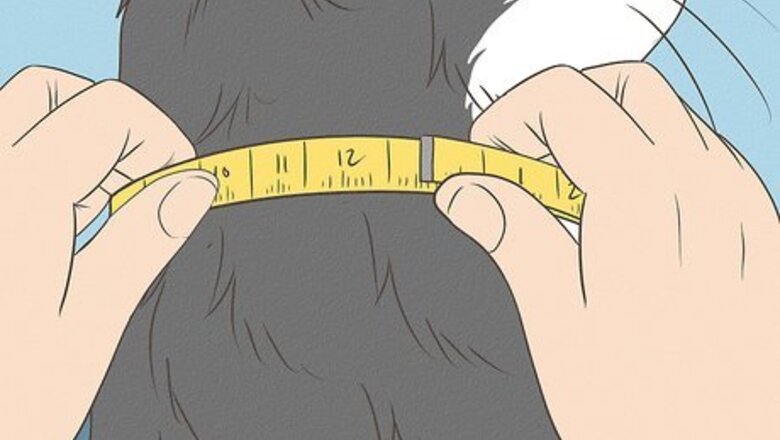
views
X
Expert Source
Molly DeVossCertified Feline Training and Behavior Specialist & Certified Cat Behavior Consultant
Expert Interview. 15 July 2021.
Your veterinarian should be able to put on the collar for you, however, in cases of emergency, it is possible to do it yourself.[2]
X
Research source
Preparing the Collar
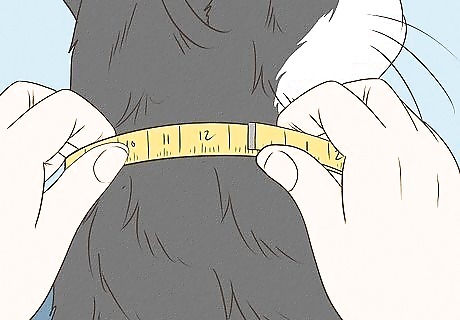
Measure your cat's neck size. This will help you determine the size of e-collar you need and how tight you'll need to make the e-collar. When you believe you have a correctly sized collar, try it on the cat to see if it fits. You can quickly take a measuring tape and wrap it around the neck of your cat to get an estimate of how large the e-collar should be. However, experimenting with different settings on the e-collar is the only way to verify what setting makes for the best fit. Ideally, your first fitting should be done by a veterinarian. If you feel the need to remove and replace the collar, use the same settings that your veterinarian used when first applying the e-collar. The Elizabethan collar should fit snugly, so that the cat cannot move its head much.
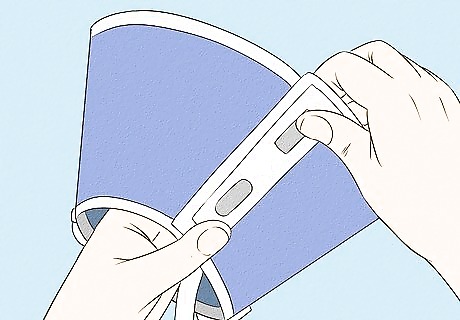
Fold the collar. The collar should be flat when you get it. Wrap it around to form the cone shape the Elizabethan collar is known for. Be sure that the side labeled "bottom" is wrapped underneath the one that reads top. How far these two sides overlap will depend upon how tight the collar will be. Most collars are adjustable. Experiment to see what size fits your cat. If the sides are not labeled “top” or “bottom,” put the side with the long plastic tab hanging from it on top.
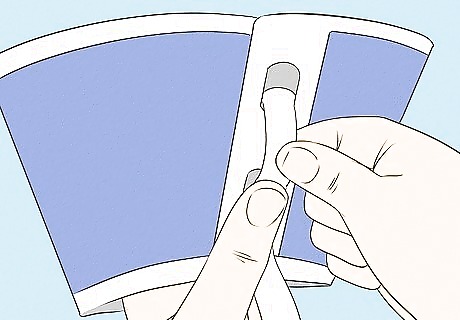
Thread the long plastic tab. The top fold should have a long piece of plastic hanging off the inside of the fold that is aligned with two large holes. The bottom fold should have four small slits, that might be labeled "in" and "out". Align the folds so that you can thread the plastic all the way through the first slit, out the second, in the third, and out the fourth. By the time you complete this process the collar should be securely shaped like a cone. This is a good time to slide the cone on to your cat’s head to determine if it fits appropriately. Remember, you will use an additional collar to secure the e-collar in place when you are done.

Thread the three smaller plastic tabs. There should be three smaller pieces of plastic, circling the inside of the collar. These should be aligned with their own slits. Thread these in and out of the slits, so that by the end you have four loops around the inside of the collar. Check to verify that the loops are secure and cannot easily be pulled out. You might want to bend the end of the plastic a little bit and pull on the loop to keep the plastic firmly in place. These loops will be used so that you can wrap your cat's normal collar around the inside of the e-collar to help secure it in place.
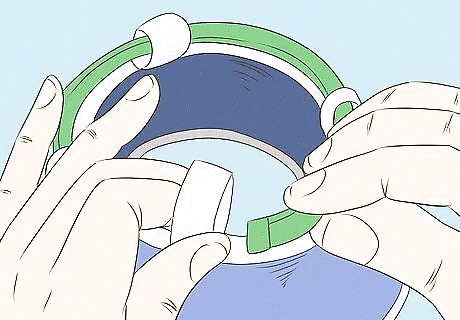
Run your cat’s collar through the loops. Now that you have four loops around the inside of the Elizabethan collar, run your cat’s normal collar through these loops. That way, once the Elizabethan collar is on your cat, you can use the other collar to help secure it in place. You should be able to get your fingers under the collar, but it shouldn't come off with a gentle tug.
Putting the Collar on Your Cat

Pick up your cat. How you pick up your cat will vary depending upon how cooperative it is. If it is content being handled, grab your cat underneath the abdomen with one hand. Hold it close to your body. Use your other hand to hold its chin in place. Carry it to a flat surface like a table. If your cat is frightened, place a towel over it. Let it sit for a couple of minutes until it calms down. Then wrap the towel around the bottom of your cat and pick up it up, so that it is bundled up in the towel. Try putting on the E-collar while your cat is tired, relaxed, or sleeping.
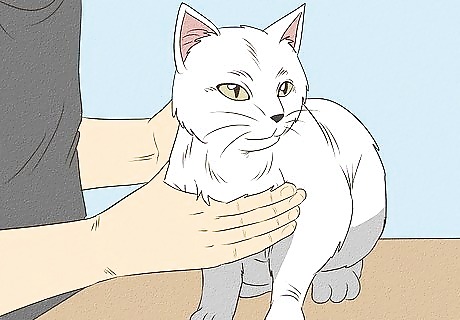
Hold the cat. If you have someone to assist you, have him use both hands to hold the cat's front legs. At the same time, he should lean over on the table and press his arms against the side of the cat. That way, the cat will be secured by pressure on both sides. Talk to your cat in a calming voice to reassure it and make it more comfortable.

Slide the Elizabethan collar on to your cat. Consider asking a second person to hold your cat in place; it will probably not want to cooperate. Standing behind your cat, slide the smaller opening of the e-collar over the cat's face and onto the neck. Gently pull the cat's ears forward.
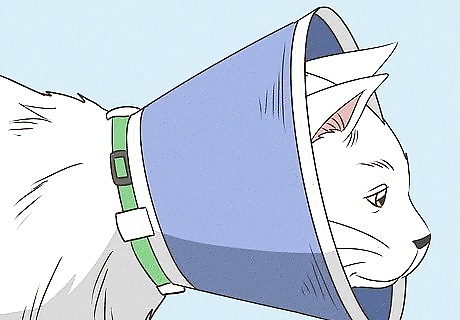
Close the collar. Close the collar that you looped through the inside of the Elizabethan collar. This should secure the Elizabethan collar in place. Be sure that it fits snugly, without impeding your cats’ breathing. Alternatively, something like a ribbon can be passed through the loops and then tied around your cats neck to secure the e-collar in place.
Living with the Collar

Get professional help. While you should be able to install and remove the Elizabethan collar yourself, a veterinarian will be able to make sure that you have the best fit. Try to have a professional take on and pull off the collar whenever possible. Do not stop use of the collar until you have been told to do so by a veterinarian.
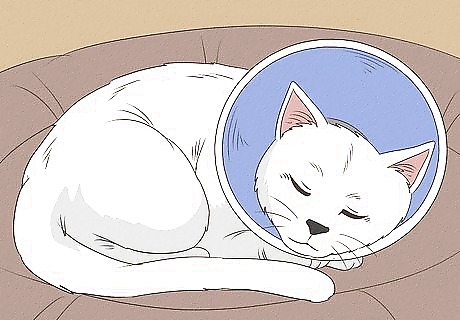
Refrain from taking the collar off. While the Elizabethan collar might look uncomfortable, you cat should be able to eat, sleep, and get around with it on. There is no good reason to take it off, and if you do, your cat might ruin the stitching on its wounds, requiring serious surgical intervention. If you do feel the need to remove the collar, the process should not be too difficult. Simply undo the secondary collar that is wrapped through the loops of the Elizabethan collar. Then pull the Elizabethan collar directly off your cats’ head. Leave the remainder of the collar constructed so that it can easily be slid back on your cat when the time comes. Never let your cat go outside while they're wearing an E-collar. It can restrict their vision and prevent them from seeing potential dangers. The collar can also get hung-up on foliage and hamper your cat's movement or ability to fit in tight spaces.

Ask your veterinarian about alternatives. There are now some alternatives to the Elizabethan collar on the market that purport to be more comfortable, or even safer in that they don’t block peripheral vision and thus are less likely to lead to another accident. Before trying these though, consult with your veterinarian about how effective these alternatives are.













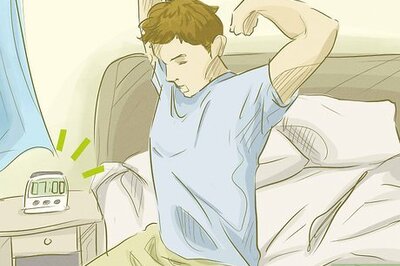






Comments
0 comment